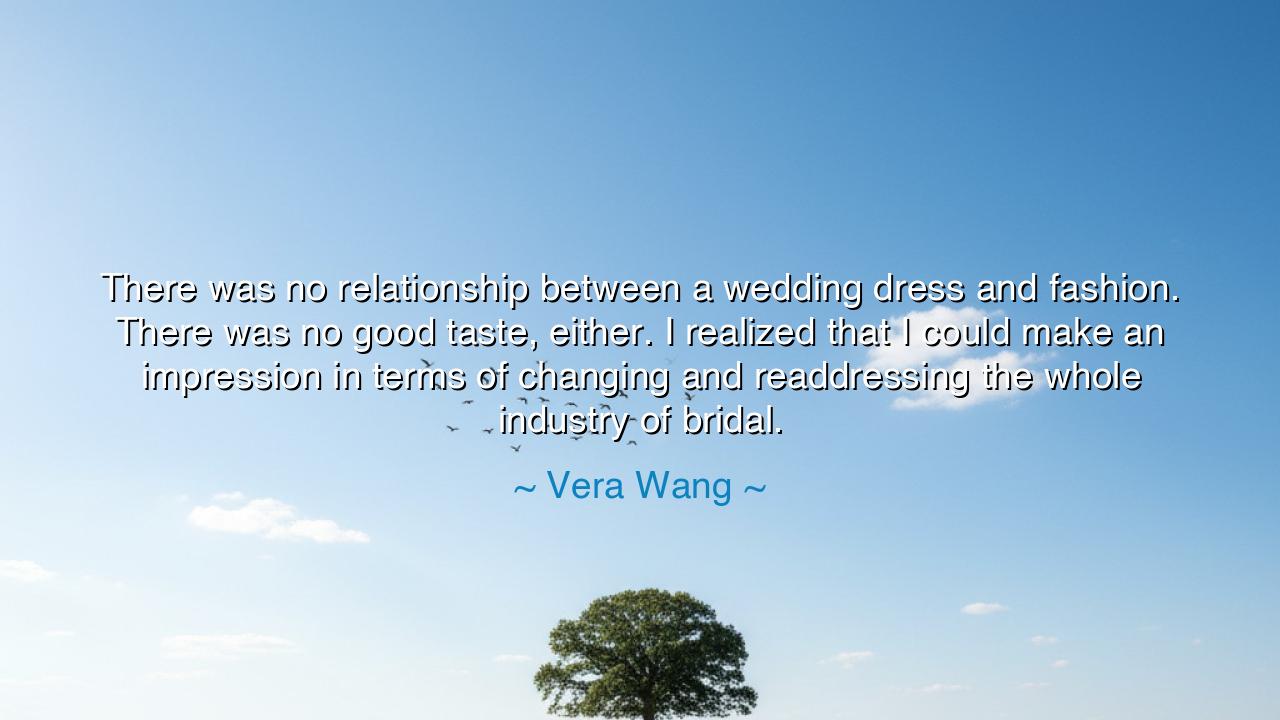
There was no relationship between a wedding dress and fashion.
There was no relationship between a wedding dress and fashion. There was no good taste, either. I realized that I could make an impression in terms of changing and readdressing the whole industry of bridal.






In the words of Vera Wang, “There was no relationship between a wedding dress and fashion. There was no good taste, either. I realized that I could make an impression in terms of changing and readdressing the whole industry of bridal,” we hear the call of a visionary who saw emptiness where others saw tradition. The wedding dress, that garment meant to embody beauty and love, had fallen into stagnation—bereft of imagination, severed from the living pulse of fashion. Wang speaks as one who dared to bridge the divide, to breathe artistry into ritual, and in so doing, to remake the very image of marriage itself.
Her words reveal a truth about the power of vision: that entire industries can slumber in complacency until awakened by one who dares to question. Where others accepted sameness, Wang saw lack. Where others bowed to convention, she asked what beauty could be. In this courage, she echoes the spirit of all reformers who gaze upon the ordinary and declare, “This is not enough.” By daring to reimagine the bridal gown, she not only clothed women differently, she redefined how they felt upon the threshold of love.
History offers us the example of Charles Frederick Worth, who in the nineteenth century transformed the craft of dressmaking into the art of haute couture. Before him, fashion was service; after him, it became art, identity, and power. Just as Worth raised fashion itself, so Wang elevated the wedding dress, carrying it from mere symbol into personal expression. Her revolution was not of politics or empire, but of fabric and form—and yet it touched millions of lives, for every bride who walked in her creations carried the weight of new meaning.
The good taste she speaks of is not snobbery, but harmony—the marriage of tradition and innovation, of timelessness and individuality. To wear a gown that reflects not only ritual but self is to declare before the world that love is both universal and personal. Wang’s words remind us that even the most ancient traditions must be renewed, lest they become hollow shells. The wedding dress, through her vision, became not only a costume for a day, but a canvas for identity, artistry, and dreams.
Thus, let this teaching endure: every institution, even those wrapped in sacred ritual, must be open to transformation. The wedding dress was once stagnant, until one woman dared to weave fashion into its threads, making it alive again. Vera Wang shows us that beauty is not static, but ever reborn, and that the courage to change what seems untouchable can ignite revolutions—quiet revolutions that do not topple thrones, but instead redefine how humanity celebrates its greatest vow: love.






AAdministratorAdministrator
Welcome, honored guests. Please leave a comment, we will respond soon